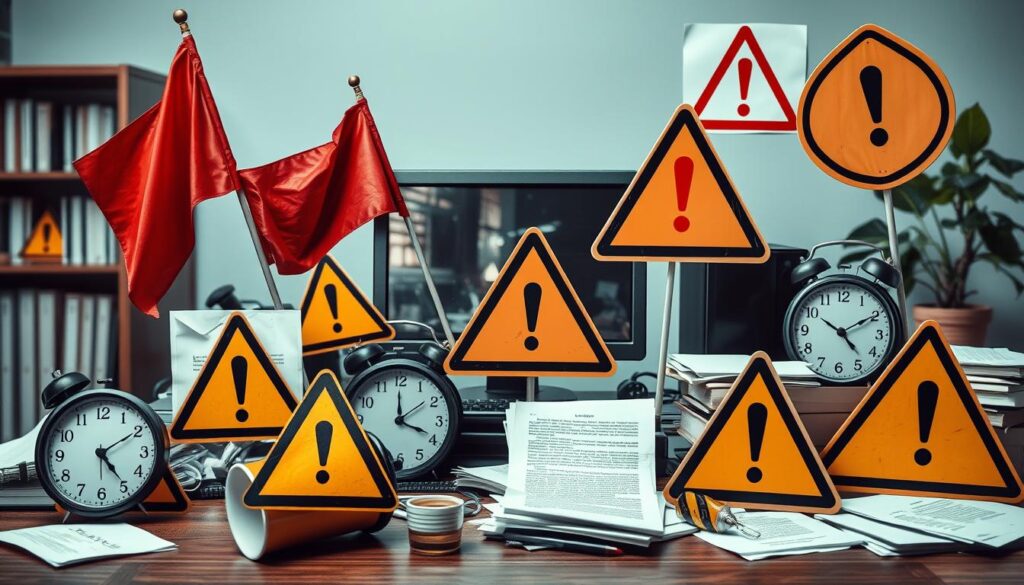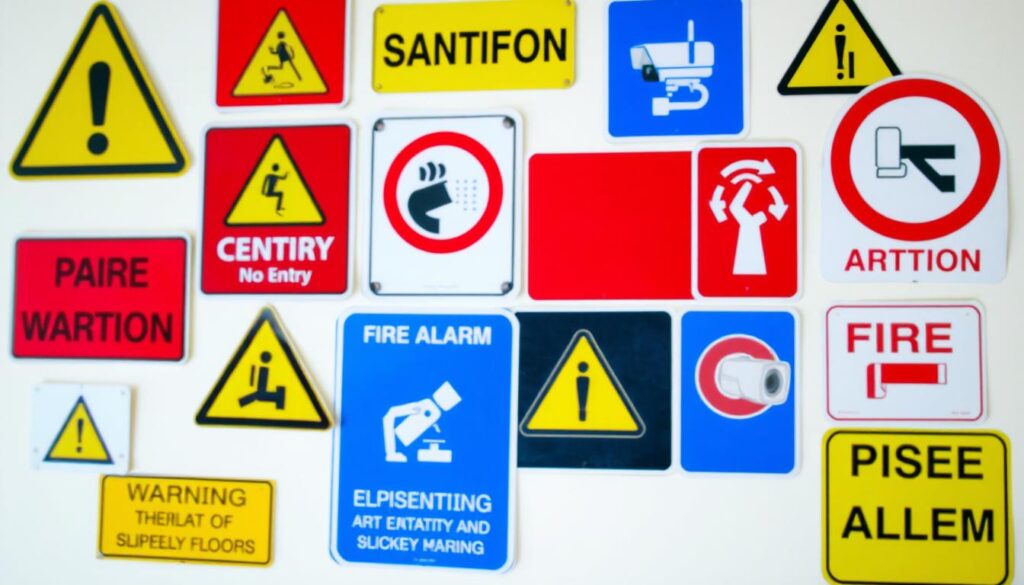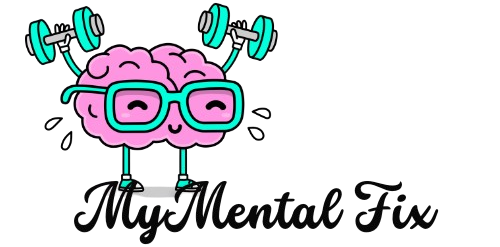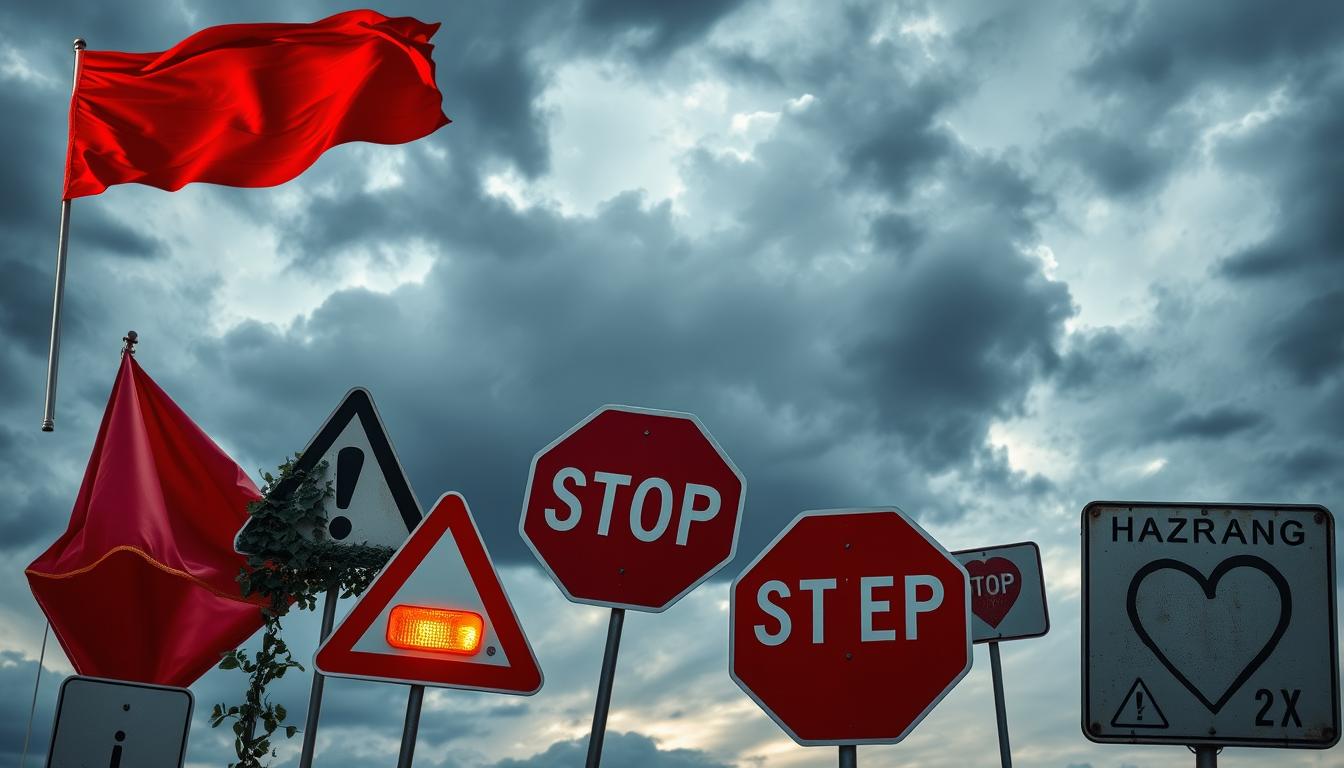Table of Contents
Life often sends us subtle signals that something’s off. I learned this the hard way in a long, tough relationship. The warning signs were there, but I ignored them until it was too late.
Red flags are like your early warning system. They’re those gut feelings and uncomfortable moments that hint at problems. It’s not about being paranoid—it’s about keeping yourself safe and making smart choices.
In this guide, you’ll learn about key warning signs in different areas of life. Knowing these signs can help you deal with tough situations better. It’s a skill that’s vital in both personal and professional life.
If you’re having trouble trusting your instincts or want to be more alert, this article is for you. It will teach you how to spot and handle potential dangers early. Your safety and happiness depend on noticing those important warning signs.
Understanding Red Flags and Their Significance
Red flags are important signs that show potential problems in life. Knowing these warning signs can help you avoid unexpected challenges and serious issues.
Our brains are made to find threats and risks. This helps us deal with complex situations by spotting danger signs or problems.
The Psychology Behind Recognizing Warning Signs
Seeing warning signs means noticing small changes in behavior and surroundings. Your gut feeling is key in spotting problems early.
- Emotional patterns that suggest underlying issues
- Behavioral inconsistencies
- Unexplained changes in communication
Why People Dismiss Important Signals
Many ignore red flags because of psychological defenses. Biases like confirmation bias and emotional attachment can make it hard to see the signs.
“Recognizing a red flag is the first step to protecting yourself from potential harm.” – Dr. Sarah Reynolds, Psychologist
The Cost of Ignoring Red Flags
Ignoring warning signs can cause big problems. These can include emotional pain, financial loss, and even safety risks.
| Ignored Warning Sign | Potential Consequence |
|---|---|
| Consistent workplace disrespect | Career stagnation |
| Repeated relationship trust violations | Emotional trauma |
| Financial warning signs | Significant economic damage |
Learning to trust your instincts and critically analyze potential problems is a skill that can be developed with practice and self-awareness.
Common Examples of Red Flags in Relationships
Knowing the signs of trouble in relationships can keep you safe. Good relationships are supportive, respectful, and help each other grow. If you notice certain signs, they might show deeper problems that need fixing.
Spotting red flags early can prevent a lot of pain. Healthy relationships need respect, trust, and clear talk.
- Consistent disrespect or belittling behaviors
- Controlling or manipulative actions
- Inability to communicate openly and honestly
- Frequent criticism and negative interactions
- Lack of personal boundaries
“Trust your instincts when something feels wrong in a relationship.” – Dr. Jennifer Smith, Relationship Counselor
Some key warning signs include:
- Emotional manipulation: Using guilt or shame to control your actions
- Isolation tactics: Trying to keep you away from friends and family
- Inconsistent communication: Unpredictable or silent responses
Watch for patterns, not just one-off incidents. Your feelings are important. Spotting these signs can help you choose better for your relationships.
Warning Signs in Professional Settings
Working in a professional setting means you need to watch out for red flags. These signs can affect your career and well-being. Knowing them early can help you grow and stay safe.

Spotting red flags in your workplace is key to making smart career choices. These signs can show deeper problems in how a company is run and who leads it.
Workplace Culture Warning Signs
Toxic workplace cultures have subtle but clear signs:
- High employee turnover rates
- Lack of clear communication
- A constant negative vibe in the office
- Unfair ways of judging performance
“A healthy workplace cultivates growth, respect, and mutual understanding.” – Corporate Culture Expert
Career Development Red Flags
These signs can block your career growth:
- No clear paths for career advancement
- Stale skill-building programs
- Little training and mentorship
- Too little feedback on performance
Signs of Toxic Leadership
Spotting toxic leaders early can prevent career damage:
- Micromanagement that takes away employee freedom
- Showing favoritism and treating people unfairly
- Leaders not being held accountable for their actions
- Unpredictable communication and mixed messages
By being alert and recognizing these signs, you can protect your career. You can make choices that are good for you.
Financial Red Flags That Demand Immediate Attention
Keeping your finances safe means watching for trouble signs. Spotting red flags early can prevent big financial losses. It’s crucial to stay alert and act fast when you see warning signs.
“Financial freedom starts with understanding the warning signals in your economic landscape.” – Suze Orman
Some key financial red flags you should never ignore include:
- Spending more than you make
- Using all your credit cards without a plan to pay back
- Getting overdraft notices often
- Putting off opening your financial statements
Investment offers often have warning signs too. Be careful of deals that seem too good to be true. Watch out for high-pressure sales and unclear financial details, as these are big warning signs.
| Financial Red Flag | Potential Risk | Recommended Action |
|---|---|---|
| Mounting Credit Card Debt | Long-term Financial Instability | Create Debt Reduction Plan |
| Zero emergency savings | Financial Vulnerability | Build 3-6 Months Emergency Fund |
| Constant borrowing | Credit Score Damage | Review Spending Habits |
Remember, catching these trouble signs early can save you from big financial problems. Trust your gut and get expert advice if you’re unsure about your finances.
Health and Wellness Warning Indicators
Your body and mind send out subtle signals about your health. Catching these signs early can help prevent bigger problems. Knowing what to look for helps you stay healthy and well.
Physical Health Warning Signs
Your body has its own way of warning you. Don’t ignore these signs:
- Unexplained persistent fatigue
- Sudden weight fluctuations
- Chronic pain or recurring headaches
- Changes in skin texture or color
- Unusual bruising or bleeding
“Listen to your body. It whispers before it screams.” – Unknown
Mental Health Red Flags
Mental health is just as vital as physical health. Look out for these signs of mental health issues:
- Prolonged mood changes
- Social withdrawal
- Difficulty concentrating
- Significant sleep pattern disruptions
- Increased anxiety or unexplained panic attacks
Lifestyle Warning Indicators
Your daily habits can show important health signs. Keep an eye on these lifestyle indicators:
- Consistently poor sleep quality
- High stress levels
- Unhealthy eating patterns
- Lack of physical activity
- Excessive alcohol or substance consumption
Spotting these warning signs early lets you get help and make changes before problems get worse.
Key Safety and Security Red Flags

Keeping yourself safe means knowing the signs of danger. You need to watch out for warning signs in both the real world and online.
Online safety is a big challenge today. Hackers keep finding new ways to harm us. Spotting problems early can save your personal info and money.
- Unexpected account login notifications
- Unusual credit card transactions
- Suspicious emails asking for personal info
- Unrecognized devices accessing your accounts
“Safety is not an accident, but a conscious choice of vigilance and preparation.” – Security Expert
Real-world safety has many layers. Key markers of danger include:
- Dark parking lots
- Open doors in homes
- Not checking who you’re dealing with
- People you don’t know hanging around
| Security Domain | Red Flag Indicators | Recommended Action |
|---|---|---|
| Digital Security | Many failed login tries | Change passwords right away |
| Physical Security | Broken window locks | Fix or replace them fast |
| Personal Safety | Feeling uneasy around someone | Write it down, get help |
Being safe means always being on guard and acting fast when you see danger. Listen to your gut and get help when you need it.
Environmental and Home-Related Warning Signs
Your home is more than just a place to live—it’s your safe haven. Keeping it safe means watching for warning signs. Spotting these signs early can prevent expensive fixes and keep you safe.
Knowing the warning signs in your home is key to a safe and healthy living space. Issues like structural problems, air quality, and neighborhood conditions all affect your home’s health.
Structural Warning Signs
Structural integrity is vital for your home’s safety. Look out for these important signs:
- Visible wall cracks wider than 1/4 inch
- Doors or windows that stick or don’t close properly
- Uneven or sloping floors
- Water stains on ceilings or walls
- Foundation shifting or settlement
Indoor Air Quality Indicators
Your home’s air quality affects your health. Watch for these signs of air quality issues:
- Persistent musty or unusual odors
- Visible mold growth
- Excessive humidity
- Unexplained respiratory issues
- Dust accumulation despite regular cleaning
Neighborhood Safety Signals
Your neighborhood’s safety is crucial for your home’s safety. Be aware of these neighborhood warning signs:
- Increasing crime rates
- Abandoned or severely neglected properties
- Frequent police activity
- Decline in local infrastructure maintenance
- Reduction in community engagement
“Your home is your first line of defense—stay informed and proactive about potential warning signs.”
Regular inspections and keen observation can help you address potential issues before they become significant problems.
Digital and Online Security Red Flags
Keeping your online presence safe is crucial. Knowing common red flags helps you stay safe in the digital world. This way, you can protect your personal info from bad actors.
“In the digital age, awareness is your most powerful security tool.” – Cybersecurity Expert
Digital security red flags show up in many online situations. These signs might seem small but can really harm you.
- Suspicious email attachments from unknown senders
- Unsolicited requests for personal information
- Pressure to click unexpected links
- Inconsistent social media profiles
Online platforms can be tricky to keep safe. Sites like social media and dating sites are often where scammers lurk. They look for people to trick.
| Digital Red Flag | Potential Risk | Recommended Action |
|---|---|---|
| Emails with urgent language | Phishing attempt | Verify sender independently |
| Unrealistic financial offers | Potential scam | Research before engaging |
| Requests for immediate financial transfers | Identity theft | Never share sensitive information |
Your digital safety depends on being careful online. Trust your instincts if something seems wrong. Always keep your personal info safe.
Knowing about digital security red flags helps you protect yourself better. Stay alert, be careful, and manage your online presence well.
Conclusion: Taking Action When You Spot Warning Signs
Spotting red flags is just the start to keep yourself safe in many areas of life. Knowing how to react to these signs can really help your safety, career, and happiness. It lets you make choices that protect your interests.
If you see warning signs, listen to your gut and act fast. Look up more info, talk to experts, and think it over carefully. This is true for all parts of your life, like relationships, work, money, or health.
It’s important to act early. Getting better at spotting serious signs takes time and being aware of yourself. Be smart and always put your safety and growth first. By being alert to red flags, you can make choices that help you in the long run.
Your ability to spot and act on warning signs shows you’re strong and wise. Always be ready to protect yourself and keep learning. Every red flag is a chance to grow and make your life better.

